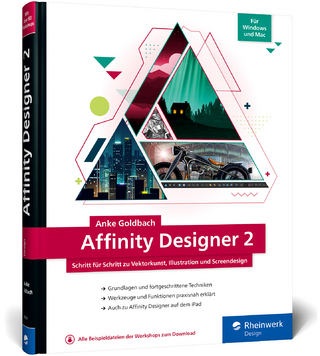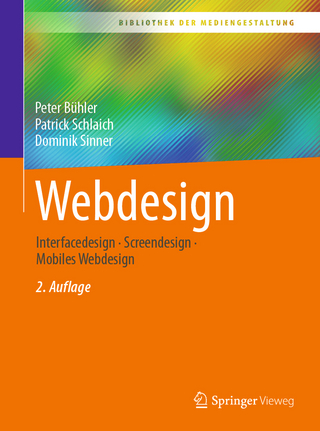
Illumination and Color in Computer Generated Imagery
Springer-Verlag New York Inc.
978-0-387-96774-5 (ISBN)
- Titel ist leider vergriffen;
keine Neuauflage - Artikel merken
1.0 Introduction.- 1.1 Intent and Overview.- 1.2 The Process of Creating Images.- 1.3 Representation or Simulation of Reality.- 2.0 The Illumination Process.- 2.1 Light and Materials.- 2.2 Background Optics and Physics.- 2.2.1 Vector Notation.- 2.2.2 The Wave Nature of Light.- 2.2.3 Illuminating Hemisphere and Solid Angle.- 2.2.4 Intensity and Energy.- 2.2.5 Reflection and Refraction.- 2.2.6 Geometry of a Surface.- 2.2.7 Geometric Attenuation.- 2.3 Surface Illumination.- 2.3.1 Coherent Illumination.- 2.3.2 Incoherent Illumination.- 2.3.2.1 Incoherent Mechanism.- 2.3.2.2 Microfacet Distribution.- 2.3.2.3 Computing Incoherent Illumination.- 2.3.2.4 Ideal Diffuse Illumination.- 2.3.3 Emissive Illumination.- 2.3.4 A Generalized Illumination Expression.- 3.0 Perceptual Response.- 3.1 Describing Color.- 3.2 Colorimetry.- 3.3 Colorimetry and the RGB Monitor.- 3.4 Alternate Color Representations.- 3.5 Color Spaces for Color Computation.- 3.5.1 Computation in RGB.- 3.5.2 Spectral Sampling Approaches.- 3.5.3 Sources of Confusion.- 4.0 Illumination Models.- 4.1 Shading and Illumination Basics.- 4.1.1 Starting from the Eye.- 4.1.2 Starting from the Light.- 4.1.3 Combined Techniques.- 4.2 Incremental Shading, Empirical Models.- 4.2.1 Diffuse Illumination.- 4.2.2 Atmospheric Attenuation.- 4.2.3 Specular Highlights.- 4.2.4 Geometric Smoothing.- 4.3 Ray Tracing, Transitional Models.- 4.3.1 Improved Specular Reflection.- 4.3.2 Macroscopic Surface Properties.- 4.3.3 Recursive Reflection and Refraction.- 4.3.4 Distributed Ray Tracing.- 4.4 Radiosity, Analytical Models.- 4.4.1 An Energy Equilibrium Illumination Model.- 4.4.2 Radiosity for Diffuse Environments.- 4.4.3 Radiosity for Specular Environments.- 4.5 Hybrid Techniques.- 4.5.1 View Independent Illumination.- 4.5.2 View Dependent Illumination.- 4.6 Visual Comparison.- 4.7 Summary.- 5.0 Image Display.- 5.1 Image File Considerations.- 5.1.1 Color Correction for Display.- 5.1.2 Gamma Correction for Display.- 5.1.3 Color Clipping and Compressing for Display.- 5.1.4 Image Dither and Patterning.- 5.2 NTSC and RGB Video.- 5.3 Video Setup for Image Display.- 5.4 Monitor Alignment and Calibration.- 5.5 NTSC Limitations.- 5.6 Black and White Display.- Appendix I Terminology.- Appendix II Controlling Appearance.- II.1 Surface Character.- II.1.1 Dielectric Materials.- II.1.2 Conductive Materials.- II.1.3 Composite Materials.- II.1.4 Using Published Spectral Data.- II.2 Surface Finish.- Appendix III Example Code.- III.1 Geometric Utilities.- III.1.1 Code Summary.- III.1.2 Code Source.- III.2 Hemispherical Integrator.- III.2.1 Code Summary.- III.2.2 Code Source.- III.3 Geometric Attenuation.- III.3.1 Code Summary.- III.3.2 Code Source.- III.4 Microfacet Distributions.- III.4.1 Code Summary.- III.4.2 Code Source.- III.5 Fresnel Approximation.- III.5.1 Approximation Methodology.- III.5.2 Code Summary.- III.5.3 Code Source.- III.6 Illumination Models.- III.6.1 Illuminated Surface Description.- III.6.2 Code Summary.- III.6.3 Code Source.- III.7 Color Transformation.- III.7.1 Material Data.- III.7.2 Code Summary.- III.7.3 Code Source.- III.8 Spectral Sampling.- III.8.1 Code Summary.- III.8.2 Code Source.- III.9 RGB Color Cupping.- III.9.1 Code Summary.- III.9.2 Code Source.- Appendix IV Radiosity Algorithms.- IV.1 Pseudocode Definition.- IV.2 Hemi-cube Form Factors.- IV.3 Specular Radiosity.- IV.4 Hybrid Form Factors.- Appendix V Equipment Sources.- References.
| Reihe/Serie | Monographs in Visual Communications |
|---|---|
| Zusatzinfo | Bibliography |
| Verlagsort | New York, NY |
| Sprache | englisch |
| Maße | 163 x 239 mm |
| Gewicht | 630 g |
| Themenwelt | Mathematik / Informatik ► Informatik ► Grafik / Design |
| Mathematik / Informatik ► Informatik ► Software Entwicklung | |
| ISBN-10 | 0-387-96774-5 / 0387967745 |
| ISBN-13 | 978-0-387-96774-5 / 9780387967745 |
| Zustand | Neuware |
| Informationen gemäß Produktsicherheitsverordnung (GPSR) | |
| Haben Sie eine Frage zum Produkt? |
aus dem Bereich


